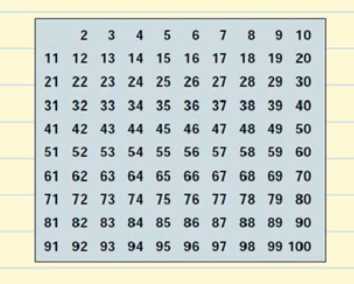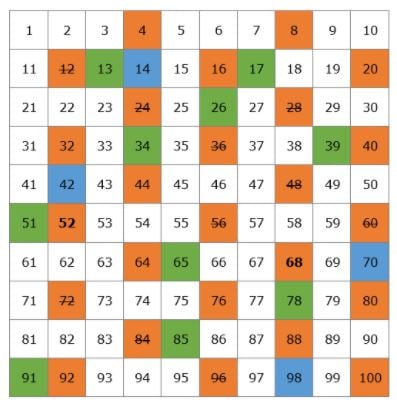

The first five cube numbers are: 1, 8, 27, 64 and 125. The third cube number is 27 because \(3 \times 3 \times 3 = 27\), and so on. 0 is not a prime number because it is divisible by an infinite number of positive integers. 1 is not a prime number because 1 is divisible by one positive integer, 1. The second cube number is 8 because \(2 \times 2 \times 2 = 8\). A Prime number is a number that is divisible by 2 positive integers - itself and one. The first cube number is 1 because \(1 \times 1 \times 1 = 1\). It is called a cube number because it gives the volume of a cube whose side length is an integer. Cube numbersĪ cube number is the answer when an integer is multiplied by itself, then multiplied by itself again. Another way to think of prime numbers is that they are only ever found as answers in their own times tables. The third square number is 9 because \(3 \times 3 = 9\), and so on. import time as t start t.clock() primes 2,3,5,7 for num in xrange(3,100000,2): if all(numx 0 for x in primes): primes.append(num) print primes print t.
#LIST OF PRIME NUMBERS THAT ADD UP TO 100 CODE#
The second square number is 4 because \(2 \times 2 = 4\) With this code I managed on my computer to list all primes up to 100 000 in less than 4 seconds. The first square number is 1 because \(1 \times 1 = 1\). It is called a square number because it gives the area of a square whose side length is an integer.

Square NumbersĪ square number is the answer when an integer is multiplied by itself.

Identify the prime number from this list: 42, 43, 44, 45Ĥ2 and 44 are even, and so cannot be prime as they both have 2 as a factor.Ĥ3 is prime as the only factors of 43 are 1 and 43. There are an infinite number of prime numbers. Every other even number has 2 as a factor, and so will not be prime. 15 has more than 2 factors, so it is not a prime.ġ is not a prime number as it only has one factor - itself.Ģ is the only even prime number. No other whole numbers can multiply together to make 11.ġ5 is not a prime number because the factors of 15 are 1, 3, 5 and 15 ( \(1 \times 15 = 15, 3 \times 5 = 15\) ). Another way to think of prime numbers is that they are only ever found as answers in their own times tables.ġ1 is a prime number because the only factors of 11 are 1 and 11 ( \(1 \times 11 = 11\) ).

List of composite numbers chart 1 to 100. A prime number is only divisible by 1 and itself. Heres a list of all the composite numbers up to 100, marked in yellow. Prime, Square and Cube Numbers Prime numbersĪ prime number is a number with exactly two factors.


 0 kommentar(er)
0 kommentar(er)
